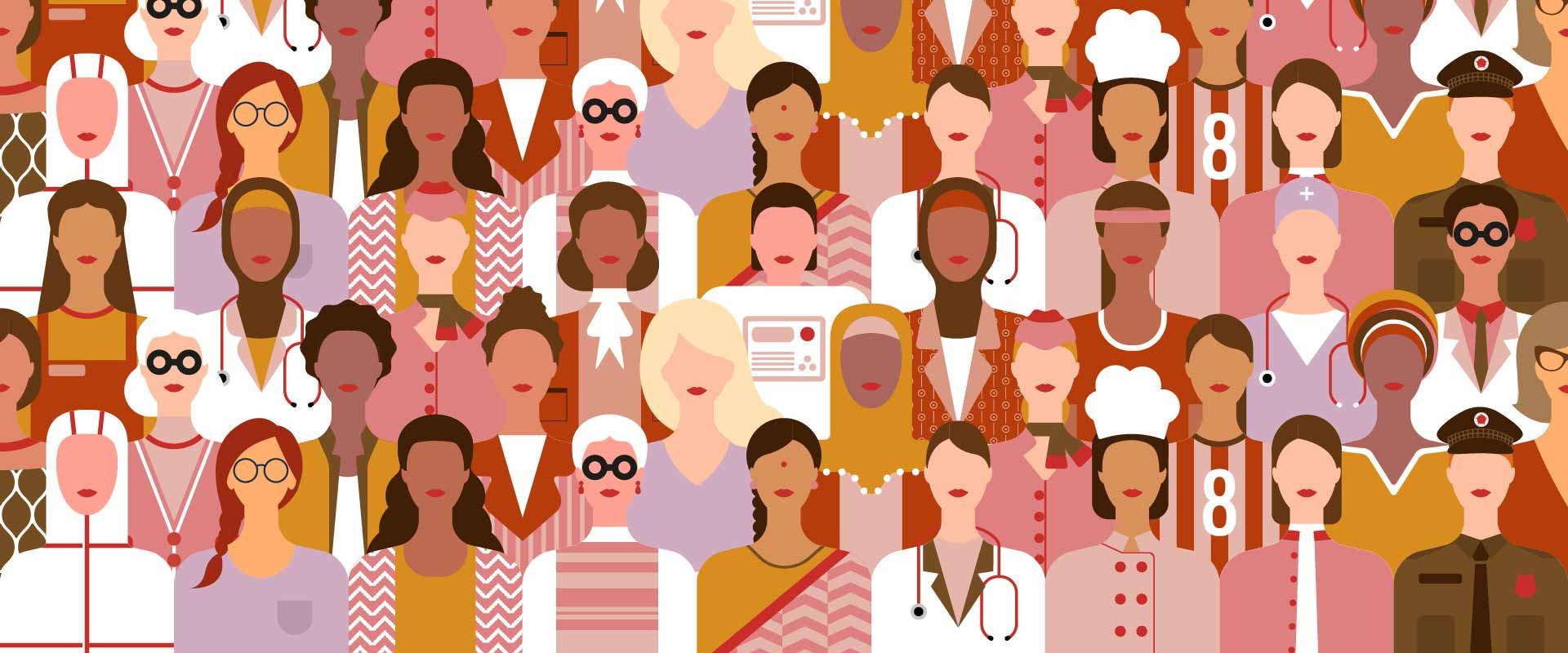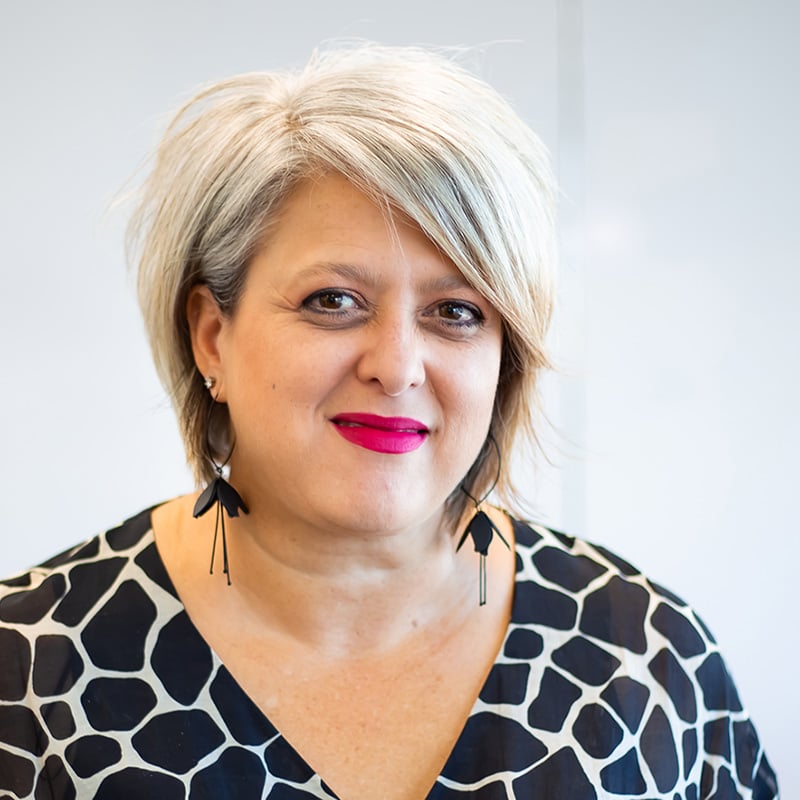Break the bias - in your workplace and beyond
Values

Values
International Women’s Day 2022 encourages us to #BreakTheBias and strive for a world that is diverse, equitable, and inclusive. Brunel Australasia’s Managing Director Tania Sinibaldi challenges us to acknowledge and confront our biases – within our workplaces and beyond.
Like it or not, we are all biased to some extent. The way we’ve been raised and the culture we’ve grown up in conditions us to adopt a particular worldview, which subtly skews the way we think, act and treat others. To be human is to hold a set of biases – whether conscious or unconscious – and that’s okay, just so long as we are prepared to acknowledge this universal flaw head on.
Our biases only pose a real problem if we remain unaware or are unwilling to honestly assess and confront them; if we deny, excuse or justify them, they have power and the potential to cause real damage. We must have the courage to look honestly at ourselves, our workplaces and our societies – to identify our biases and work to counter them in order to protect those who they unjustly impact.

International Women’s Day 2022 calls for us to #BreakTheBias. While women may face fewer clearly-defined limitations today than they did in decades gone by, gender bias continues to hold women and workplaces back. Often this bias is unseen and unintentional … but regardless of intent, its consequences are real and damaging.
Evidence of this can be found in employment statistics such as Australia’s current 22.8 per cent gender pay gap or the gross underrepresentation of women in executive-level roles (in 2021 only 19.4 per cent of Australian CEOs were female, despite women making up over 50 per cent of the workforce). Though the outcome is easy to lay bare, its cause is more often than not insidious – hard to capture and call out.
Collectively we must challenge the status quo and create work environments that are diverse, equitable, and inclusive for all. We must challenge bias, stereotypes, and discrimination. We must educate ourselves so we can recognise bias when we see it – not only in others but within ourselves too.
Did you know that 73 per cent of women experience bias at work, yet less than a third of employees are able to recognise bias when they see it? Let’s change that. Here are some of the common types of bias that women face at work (sourced from International Women’s Day/Lean In’s excellent resource 50 Ways to Fight Bias).
Likeability bias: This occurs when we expect men to be assertive leaders, but require women to be kind, humble and ‘nice’ above all else. As a result, when women assert themselves, we like them less. A study of performance reviews found that a whopping 66 per cent of women received negative feedback on their personal communication style such as ‘you can sometimes be abrasive,’ in comparison with just one per cent of men.
Performance bias: This is rooted in false assumptions we make about women and men’s abilities based solely on their gender. We tend to underestimate women’s performance while overestimating men’s. Both men and women can be guilty of this, with women often downplaying their achievements or assuming they won’t be able to handle a role they’re well equipped for. This bias often contributes to women being overlooked for jobs and promotions.
Attribution bias: This bias is linked with performance bias. When we see women as less competent than men, we tend to give them less credit for their achievements and are more likely to blame them for mistakes. This may play out in a meeting when a woman’s idea is ignored but the same idea is embraced when raised by a male colleague.
Maternal bias: This bias plays out when mothers are assumed to be less competent and less committed to their careers. As a result of this bias, women who happen to be mothers are often presented with fewer opportunities to advance their careers. Sometimes this maternal bias even extends to women who don’t have children, but possibly may in the future.
Affinity bias: This occurs when we gravitate towards those similar to ourselves in appearance, background, or beliefs. We may dislike or avoid those who are different to us and maintain an ‘us and them’ mentality. This hurts anyone excluded for being in the minority, from the female colleague left out of ‘work drinks with the boys’ to the woman of colour not being hired because ‘she isn’t a cultural fit’ for a predominantly white team.
Intersectionality: It’s important to understand that bias isn’t limited to gender. We need to recognise the different frameworks for bias and how they intersect. Women can experience additional bias due to their race, sexual orientation, a disability or other aspects of their identity.
Kimberlé Crenshaw coined the term and the concept of intersectionality; I was privileged to attend her powerful Ted Talk ‘The urgency of intersectionality’ in 2016 and encourage you to have a listen.
For practical examples of how to challenge the various workplace biases outlined above, 50 Ways to Fight Bias is an excellent resource.

Over 60 per cent of women in the workplace report experiencing dismissive or demeaning comments or actions against them. These are known as microaggressions, which not only hold back their careers but negatively impact their day-to-day experiences.
Certain groups of women experience microaggression more often than others. For example, black women are nearly 2.5 times more likely than white women to hear someone express surprise at their language skills or other abilities, while LGBTQIA+ women or women with disabilities are far more likely to hear demeaning remarks about themselves or others like them.
We all deserve to work in an environment where we feel safe, valued and free to pursue our career based on the substance of what we contribute, rather than the ‘category’ we fall under.
Knowing that bias exists isn’t enough – we all need to take action to create real change. The boldest and most impactful step you can take is to genuinely question your own outlook and biases, large or small, so you can start diffusing the ways in which they are colouring your views and actions. Harvard’s Project Implicit is an online tool that allows you to test your unconscious bias across a range of association factors – I encourage you to give it a go!
I am a passionate advocate of creating a workplace where everyone gets a ‘fair go’ and is treated with warmth and respect. I strongly believe that once we name a problem and have the courage to challenge it, collectively we are capable of making a difference that reaches far and wide. It may not always be comfortable but it’s important work that allows our workplaces – and everyone in them – to truly thrive.
A passionate and emotive leader, Tania Sinibaldi has been overseeing Brunel International N.V.’s operations throughout Australia, New Zealand and Papua New Guinea since September 2019. A strong advocate of lean, grit and a Humanocracy approach, Tania seeks to inspire, empower and equip the people around her to build better businesses and workplaces.

Tania Sinibaldi - Managing Director of Operations